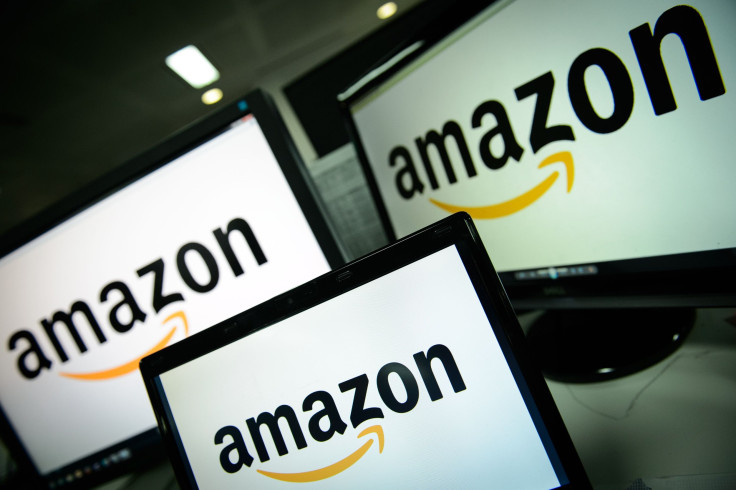Amazon Is Becoming The Third Largest Internet Ad Platform In The U.S.

Amazon (NASDAQ:AMZN) could surpass Verizon's Oath and Microsoft as the third largest online advertiser in America this year according to eMarketer. The firm estimates that Amazon's U.S. advertising business will generate $4.6 billion in revenues this year, giving it a 4.1% share of the market. $1.6 billion of that total could come from mobile ads, which would also give Amazon a 2.1% share of the U.S. mobile ad market.
As for the market leaders, eMarketer expects Alphabet's (NASDAQ:GOOG) (NASDAQ:GOOGL) Google and Facebook (NASDAQ:FB) to control 37.1% and 20.6% of the entire market, respectively, this year. But by 2020, the firm expects Amazon's share to grow to 7% as Google and Facebook's combined share slips from 57.7% to 55.9%.
This article originally appeared in The Motley Fool.
That news might surprise investors who thought Amazon made most of its money from its online marketplace and cloud services businesses. Let's take a closer look at Amazon's advertising business, and why it could gradually become a new pillar of growth for the tech giant.
How does Amazon make money from ads?
Amazon's advertising business is comprised of three main divisions: Amazon Media Group (AMG), Amazon Marketing Services (AMS), and Amazon Advertising Platform (AAP). Amazon merged the three units into a single division called "Amazon Advertising" in early September.
AMG sells display ads across its marketplace, hardware devices (like the Kindle and Fire TV), and other websites. AMS offers a pay-per-click performance marketing suite that lets vendors boost their sales with sponsored product placements, sponsored brand ads, product display ads, and custom Amazon Stores. Unlike AMG ads, AMS ads are only displayed for products sold on Amazon. Lastly, AAP is a programmatic advertising platform for AMS that offers self-serve and team-assisted marketing campaigns.
Understanding Amazon's advantages
Amazon's websites drew in nearly 200 million unique monthly visitors in the US at the end of 2017 according to comScore. In July, research firm CIRP estimated that Amazon Prime had nearly 100 million members in the US.
The Fire TV is also the second most popular streaming device in America according to Parks Associates, and the Echo remains the top dog in the smart speaker market according to CIRP. That sprawling ecosystem gives advertisers plenty of ways to promote their products.
More importantly, Amazon isn't being pilloried for its advertising practices like Google and Facebook, which face intense regulatory scrutiny over their data-mining practices. Advertisers are also complaining about their ads being displayed with inappropriate and offensive content, especially on Google's YouTube.
Amazon's strategy of displaying targeted ads based on a user's browsing and shopping history is generally considered less invasive than Google's usage of a user's internet search, web browsing, and location history, or Facebook's usage of a user's profile, liked posts and pages, and social connections.
Therefore, if public scrutiny of Google and Facebook's advertising duopoly escalates, many advertisers could flock to Amazon as an alternative advertising platform. Moreover, Amazon can leverage all the shopping data it accumulated to show consumers products that they'd be more interested in buying than products shown on Google or Facebook.
But will it move the needle for Amazon?
Amazon's advertising business is growing quickly, but eMarketer's forecast indicates that its U.S. advertising revenues will account for just 2% of its projected revenue this year.
It's unclear how much ad revenue Amazon generates overseas, but the "other" category that houses its ad business and other small divisions generated $2.19 billion in revenue -- or 4% of its top line -- last quarter. For comparison, ad sales accounted for 86% of Alphabet's revenue and 99% of Facebook's revenue in their latest quarters.
Amazon's ad business won't move the needle for the tech giant anytime soon. However, the unit's steady growth could offset any slowdowns in its core marketplace and AWS (Amazon Web Services) divisions.
John Mackey, CEO of Whole Foods Market, an Amazon subsidiary, is a member of The Motley Fool's board of directors. Suzanne Frey, an executive at Alphabet, is a member of The Motley Fool's board of directors. Teresa Kersten is an employee of LinkedIn and is a member of The Motley Fool's board of directors. LinkedIn is owned by Microsoft. Leo Sun owns shares of Amazon and Facebook. The Motley Fool owns shares of and recommends Alphabet (A shares), Alphabet (C shares), Amazon, and Facebook. The Motley Fool recommends Verizon Communications. The Motley Fool has a disclosure policy.





















